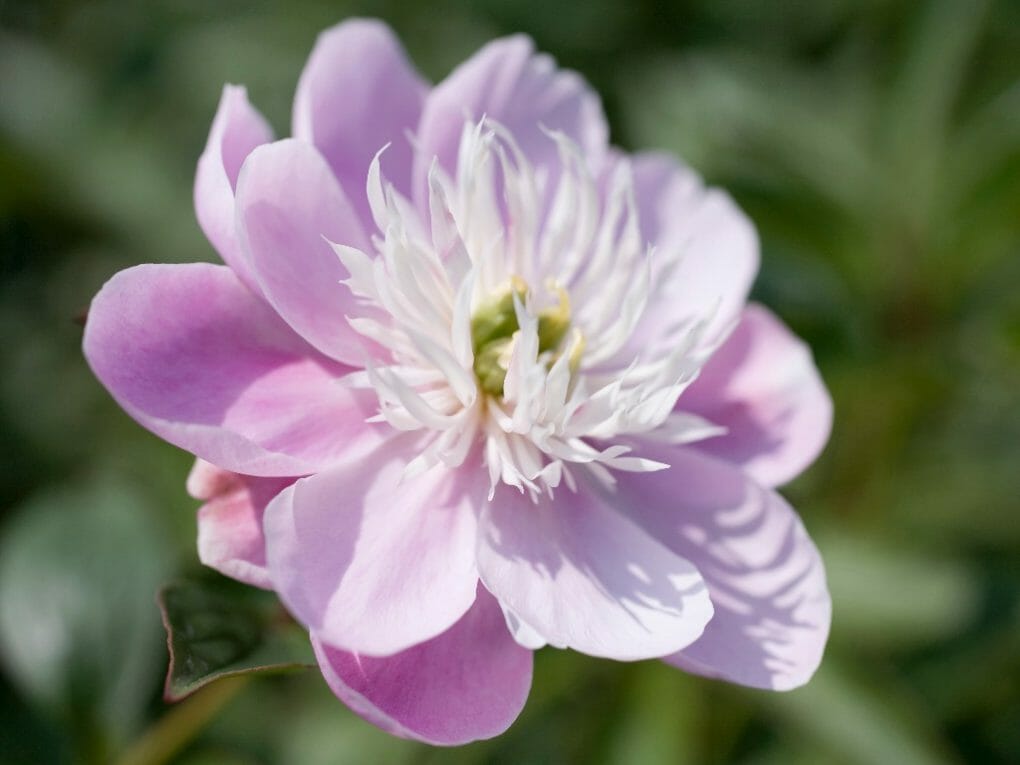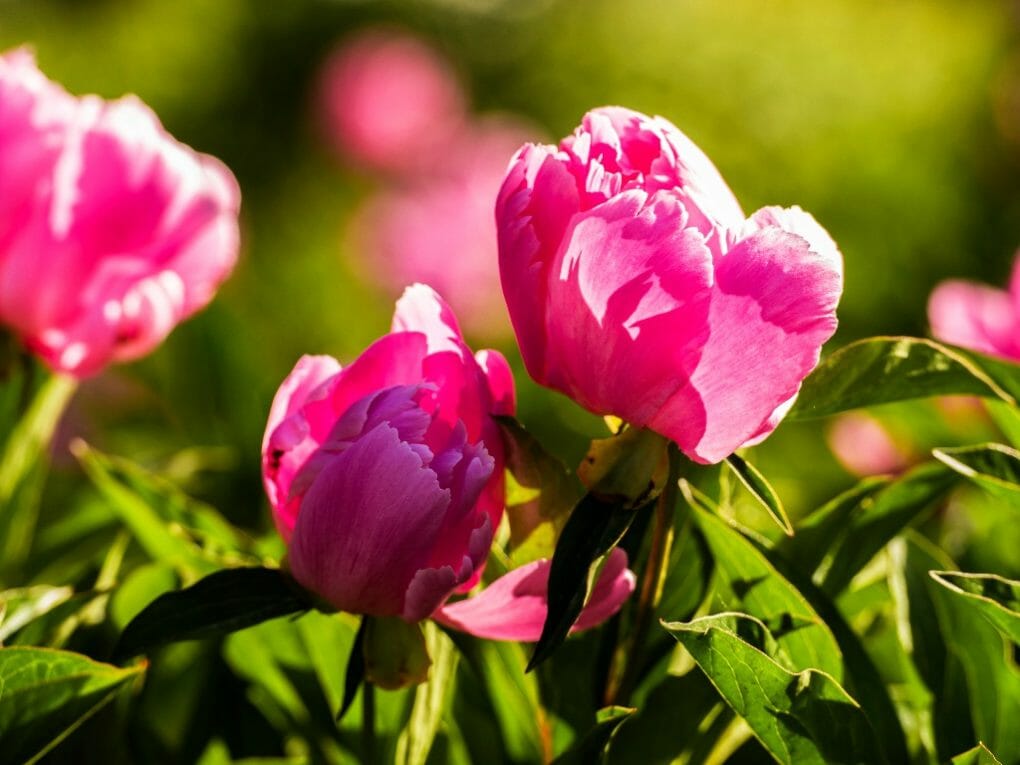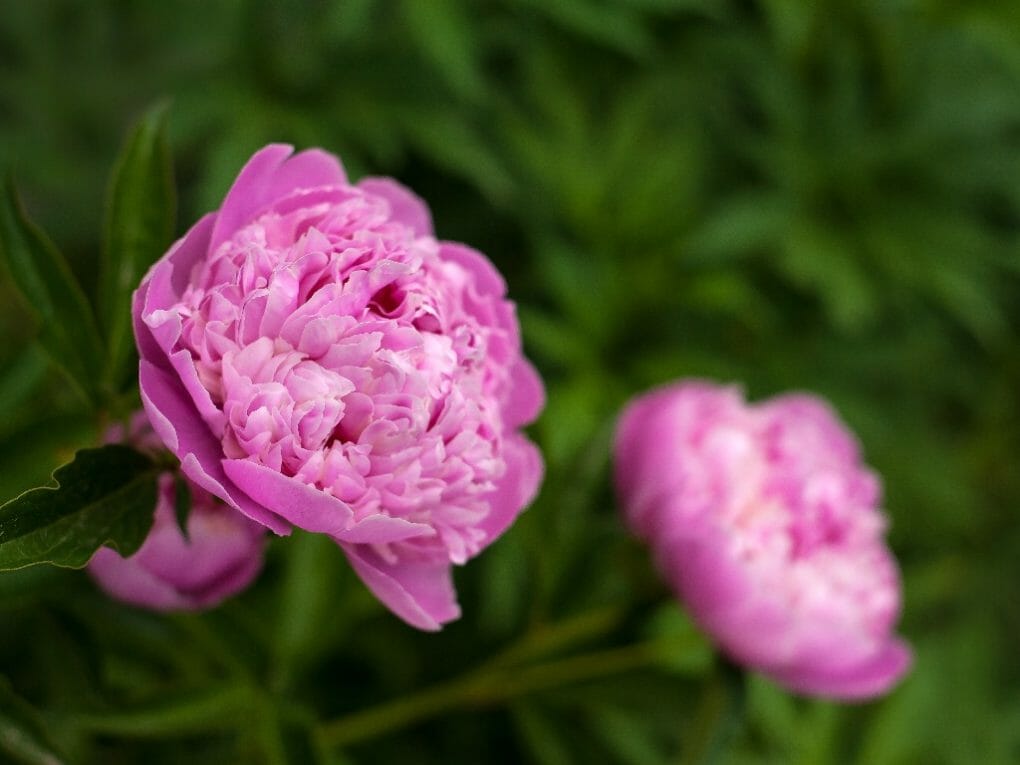How Long Does Peony Bloom? Helpful Hints for Prolonging Flowering of Peonies

Peonies can flower for more than a century. Each flower lasts about 7–12 days, and each plant has more than one flower. The easy way to keep peonies blooming longer in your garden is to plant different kinds that bloom at different times during the roughly 6-week blooming period. Different kinds bloom at different times, and we’ve made it easy for you by labeling them as early, early-mid, mid, or late season. Now that you know how to keep peonies blooming longer let’s look at the different kinds in a little more detail.
Table of Contents
When Do Peonies Flower and How Long Do They Last?
Peonies typically bloom for about six to eight weeks beginning in late spring and continuing into early summer. Flowers typically only last about a week.
The timing of blooming in your peony plant will depend on several factors. Read on to learn everything you need to know to cultivate a stunning flower garden that will fill your home with breathtaking color throughout the season.
Helpful Hints for Prolonging Flowering of Peonies
Early spring ushers in the first blooms of the woodland peonies. They are then succeeded by tree peonies about a week later. The herbaceous peonies begin to show their beauty a week or two later. The blooms only last seven to ten days, but by planting early, midseason, and late-blooming cultivars, you can extend the bloom season. You can enjoy the flowers for an extra four to six weeks!
The intersectional peonies, a cross between tree and herbaceous peonies, are the last to bloom after the herbaceous varieties have finished. The intersectional can keep flowering for up to three weeks because their buds aren’t open at once.
When making your garden plans, remember that peonies are not fond of being transplanted. It will be two to three years before they bloom again if you end up having to relocate them.
So, to sum up, you can have peonies blooming for eight weeks or more if you have all four species in your garden: woodland, tree, herbaceous, and intersectional.
Peonies flourish in USDA hardiness zones 3-8, though hardier cultivars exist for zones 2 and 9. The optimal conditions for flowering are the absence of frost and daytime temperatures between 65 and 70 degrees Fahrenheit.
When temperatures are lower, peonies have more time to bloom. Of course, there isn’t much you can do about it if you already live in a warmer climate.
The timing of your peony blooms is also dependent on your geographic location. The length of the blooming season remains the same even though weather patterns influence its beginning and end.
How to Extend Flowering Time

- Peonies can be cut while still in the bud stage, stored in the refrigerator, and used whenever a bouquet is desired. While that won’t extend the time your garden flowers last, it will allow you to bask in their glory and scent for much longer than usual.
- When the buds are soft and just beginning to show color, cut them and store them in the fridge. Remove all the leaves from the stem, then wrap them tightly in plastic. Make sure the ends are sealed. Place them flat in the freezer or refrigerator. You can store them for up to three months in the fridge.
- When you’re ready to use a bouquet, simply snip the bottom of the stem, fill a vase with lukewarm water, and store it in a cool location until it’s rehydrated. Their lifespan in a vase is roughly a week.
Care for Peony Plants After Flowering
Before we start, it’s important to note that peonies come in two distinct forms: bushes and trees.
Tree peonies are a type of large, woody perennial that blooms and grows even more lavishly year after year thanks to the roots and woody stems it established the year before.
Alternatively, peony bushes are an annual herb that completely disappears each winter. This article focuses on peonies, the most well-known type of flower.
Peonies in Summer
However, peonies do not flower continuously throughout the summer. Since the buds on intersectional varieties don’t get all open at once, the bloom time can be stretched to three weeks after the herbaceous varieties have finished. If you want your peonies to bloom continuously throughout the summer, you should plant several different types.
People often say peonies don’t bloom the first year after planting. Planting in the fall may take up to three years to bloom while planting in the spring will extend that time even further.
The 2003 book “American Horticultural Society Northeast SmartGarden Regional Guide,” however, recommends planting with the crown buds 1-3 in (2.5-8 cm) below soil level for the best results the following year.
Timeframe of Peony Bloom in the US

The following is a general timeframe for the flowering of peonies across the United States:
Tree peonies in California bloom from the end of February to the beginning or middle of March, while herbaceous varieties flower from the middle of May to the beginning of June and intersectional bloom in early May.
Tree peonies in Texas flower for herbaceous varieties between the first and last weeks of February and early and late March.
Peonies of the herbaceous variety bloom in Michigan from the end of May to the middle of June, while tree peonies flower a month earlier in late April and early May.
If you want your peonies to bloom in the winter, you must ensure that the average daily temperature is below 40 degrees Fahrenheit for at least six weeks.
Because of the high temperatures that can be expected in zones 8 and 9, only early and midseason herbaceous peony varieties should be planted there. Herbaceous peonies don’t fare as well as tree peonies in hotter climates.
Blooming peonies have a reputation for luring ants, as you may have heard or witnessed firsthand. Correct! And that’s a good thing because of their desire for the nectar. The ants aid in the flower’s blooming process by pushing the buds open. Therefore, they are essentially assisting you in obtaining the desired flowers.
Furthermore, they discourage the presence of potentially dangerous insects. In this case, the ants will help you protect your peony flowers.
